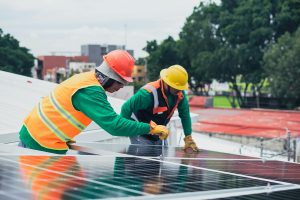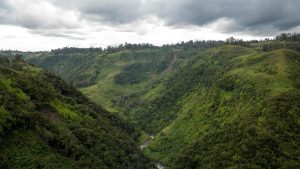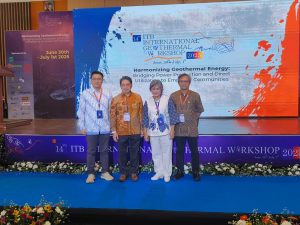Jakarta – The government, through PT Perusahaan Listrik Negara (PLN), is entering the final stage of preparing the 2024-2034 Electricity Supply Business Plan (RUPTL). This strategic plan is designed to increase national power generation capacity by 71 gigawatts (GW), with the majority based on new and renewable energy (NRE), as part of the transition to clean energy.
Deputy Minister of State-Owned Enterprises (SOEs) Kartika Wirjoatmodjo, who is familiarly called Tiko, revealed that the finalisation of this document will be carried out in early January 2025. The process involves intensive discussions between the Ministry of SOEs, the Ministry of Energy and Mineral Resources (MEMR), and the Ministry of Finance.
“We are in the final stage of drafting the RUPTL. The Minister of SOEs, Minister of Energy and Mineral Resources, and Minister of Finance will hold a final meeting to decide on this draft in January,” Tiko said in an official statement during a visit to PLN’s Load Regulatory Center (UIP2B) in Depok, West Java, Friday, December 27.
Domination of new and renewable energy (NRE)
In the new RUPTL, the government targets most additional generating capacity from renewable energy. According to Tiko, this aligns with the government’s commitment to utilise Indonesia’s abundant natural resources and reduce dependence on fossil fuels.
“Starting in 2025, PLN will massively build new and renewable energy-based power plants. Of the additional 71 GW capacity planned until 2034, the majority will be fulfilled by renewable energy. This is a big step to strengthen national energy security,” he explained.
In addition to building new power plants, PLN will also focus on developing smart grid technology and inter-island transmission networks. This step optimises energy distribution from areas rich in renewable energy potential, such as Sumatra and Kalimantan, to high-demand areas like Java.
“We plan to build an inter-island grid network between Sumatra, Kalimantan and Java. This will ensure that renewable energy capacity from Sumatra and Kalimantan can be maximally utilised to meet the needs in Java,” said Tiko.
The government views the transition to clean energy as a strategic step to maintain environmental sustainability while meeting growing electricity demand. However, Tiko acknowledges that the 2024-2034 RUPTL implementation faces challenges, including the need for large investments and the integration of new technologies.
“With tremendous natural resource potential, Indonesia has a great opportunity to become a leader in the region’s energy transition. However, we also need to ensure readiness regarding funding, technology and policy,” he added.
The RUPTL 2024-2034 reflects Indonesia’s ambition to accelerate the energy transition and the government’s commitment to supporting the global agenda to reduce carbon emissions.
“This plan is a document and a roadmap for Indonesia’s energy future. With the collaboration of all parties, we are optimistic that this target can be achieved,” Tiko concluded. (Hartatik)













